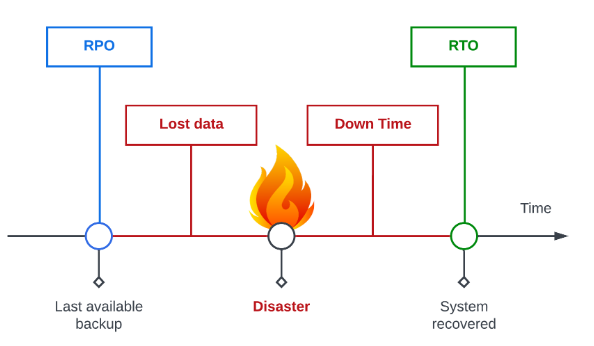This is the multi-page printable view of this section. Click here to print.
Getting started
- 1: Intro
- 2: Release notes
1 - Intro
Astronetes Resiliency Operator is a Kubernetes operator that improves the resiliency of cloud native platforms. It acts as the orchestrator that setup and manages the resiliency of Cloud Native platforms, automating processes and synchronizing data and configurations across multiple technologies.
Astronetes Resiliency Operator helps you to accomplish the following:
- Enable active-active architectures for cloud native platforms
- Automate Disaster Recovery plans for cloud native platforms
Use cases
Active-Active architectures
Active-Active architectures are a proven approach to ensure the required resiliency for mission cricital applications. It protects the application from an outage caused by both technical and operational failures in the platform and its dependencies.
Astronetes Resiliency Operator empowers organizations to deploy and maintain applications across multiple clusters or regions, ensuring maximum uptime and seamless user experiences even during failures or maintenance events.
Disaster Recovery
Business continuity refers to the ability that a particular business can overcome potentially disruptive events with minimal impact in its operations. This no small ordeal requires the definition, implementation of plans, processes and systems while involving complete collaboration and synchronization between multiple actors and departments.
This collection of assets and processes compose the company’s Disaster Recovery. Its goal is to reduce the downtime and data loss in the case of a catastrophic, unforeseen situation. Disaster Recovery needs answer two questions:
- How much data can we lose? - Recovery Point Objective (RPO)
- How long can we take to recover the system? - Recovery Time Objective (RTO)

Resiliency Operator provides a solution to improve the business continuity of Cloud Native Platforms by offering a tool that improves resiliency that is transparent in day-to-day operations while having minimal impact in technical maintenance.
Depending on the organisation, system and project necessities resiliency can be improved with a combination of real time synchronization across two or more instances and with a backup and restore strategy. Resiliency Operator implements both methods of data replication across multiple technologies and allows for flexibility on where and how is the information stored.
Business Continuity plans often include complex tests to validate backups content and that they can be restored at any time. To help with these requirements Resiliency Operator includes monitorization systems so that operational teams can make sure that the data is being correctly synchronized and its state in destination.
2 - Release notes
v1.3.5
Released: 8 November 2024
Improvements:
- Improved Synchronizations observability providing more details about write operations.
Fixes:
- Fixed kubernetes-to-bucket synchronization plugin whithout using cache
Manifests
Kubernetes:
- crds-kubernetes.yaml
- operator-kubernetes.yaml
- dashboard-assets.json
- dashboard-assets.yaml
- dashboard-synchronizations.json
- dashboard-synchronizations.yaml
OpenShift:
- alert-rules-resiliency-operator.yaml
- crds-openshift.yaml
- operator-openshift.yaml
- dashboard-assets.json
- dashboard-assets.yaml
- dashboard-synchronizations.json
- dashboard-synchronizations.yaml
v1.3.4
Released: 23 October 2024
Improvements:
- Add option to run synchronizations without cache
- Add option to show a log if an object is already in sync during the synchronization process
- Add option to show a log if an object have beed adapted for the destination during the synchronization process
- Add annotations in Kubernetes objects written in synchronizations
- Auto fix OpenShift ImageStreams that references namespaces that don’t exist
- Improved memory management in Kubernetes assets
- Improved zookeeper replication logs showing if a node have been created or updated
- Updated default zookeeper timeout to 5 minutes.
Fixes:
- Many fixes in deployment manifests
- Fixed ServiceAccounts updates
- Fixed status update for SynchronizationPlans
Manifests
Kubernetes:
- crds-kubernetes.yaml
- operator-kubernetes.yaml
- dashboard-assets.json
- dashboard-assets.yaml
- dashboard-synchronizations.json
- dashboard-synchronizations.yaml
OpenShift:
- alert-rules-resiliency-operator.yaml
- crds-openshift.yaml
- operator-openshift.yaml
- dashboard-assets.json
- dashboard-assets.yaml
- dashboard-synchronizations.json
- dashboard-synchronizations.yaml
v1.3.3
Released: 17 September 2024
Improvements:
- Improved plugins start time
Fixes:
- Set synchronization namespace in
astronetes_total_synchronized_objectsmetric - Add webook configuration in deployment manifests
- Fix controllers roles in deployment manifests
- Fix JSONPatch transformations options
Manifests
Kubernetes:
- crds-kubernetes.yaml
- operator-kubernetes.yaml
- dashboard-assets.json
- dashboard-assets.yaml
- dashboard-synchronizations.json
- dashboard-synchronizations.yaml
OpenShift:
- crds-openshift.yaml
- operator-openshift.yaml
- dashboard-assets.json
- dashboard-assets.yaml
- dashboard-synchronizations.json
- dashboard-synchronizations.yaml
v1.3.2
Released: 13 September 2024
Improvements:
- Improved metrics and updated Grafana Dashboard
Manifests
Kubernetes:
- crds-kubernetes.yaml
- operator-kubernetes.yaml
- dashboard-assets.json
- dashboard-assets.yaml
- dashboard-synchronizations.json
- dashboard-synchronizations.yaml
OpenShift:
- crds-openshift.yaml
- operator-openshift.yaml
- dashboard-assets.json
- dashboard-assets.yaml
- dashboard-synchronizations.json
- dashboard-synchronizations.yaml
v1.3.1
Released: 12 September 2024
Improvements:
- Improved plugin configuration validation
- Reduced memory used by synchronizations
- Exposed synchronization Namespace in metrics
Fixes:
- Fixed skipping delete errors in JSONPatch transformations
Manifests
Kubernetes:
- crds-kubernetes.yaml
- operator-kubernetes.yaml
- dashboard-assets.json
- dashboard-assets.yaml
- dashboard-synchronizations.json
- dashboard-synchronizations.yaml
OpenShift:
- crds-openshift.yaml
- operator-openshift.yaml
- dashboard-assets.json
- dashboard-assets.yaml
- dashboard-synchronizations.json
- dashboard-synchronizations.yaml
v1.3.0
Released: 9 September 2024
New features:
- Native support for Google Cloud Storage
- Support synchronizations from Kubernetes to Bucket
- Support synchronizations from Bucket to Kubernetes
- Customize synchronizations with DryRun, ForceSync and ForcePrune options
- Filter objects by namespace name in Kubernetes synchronizations
- Export metrics to inform about Assets status
- Export metrics to inform about synchronizations status
- Export metrics to inform about write operations
Improvements:
- Improved performance in LiveSynchronization from Kubernetes to Kubernetes
- Simplified Kubernetes object selectors in synchronizations
- Reduced amount of internal logs
Manifests
Kubernetes:
OpenShift: